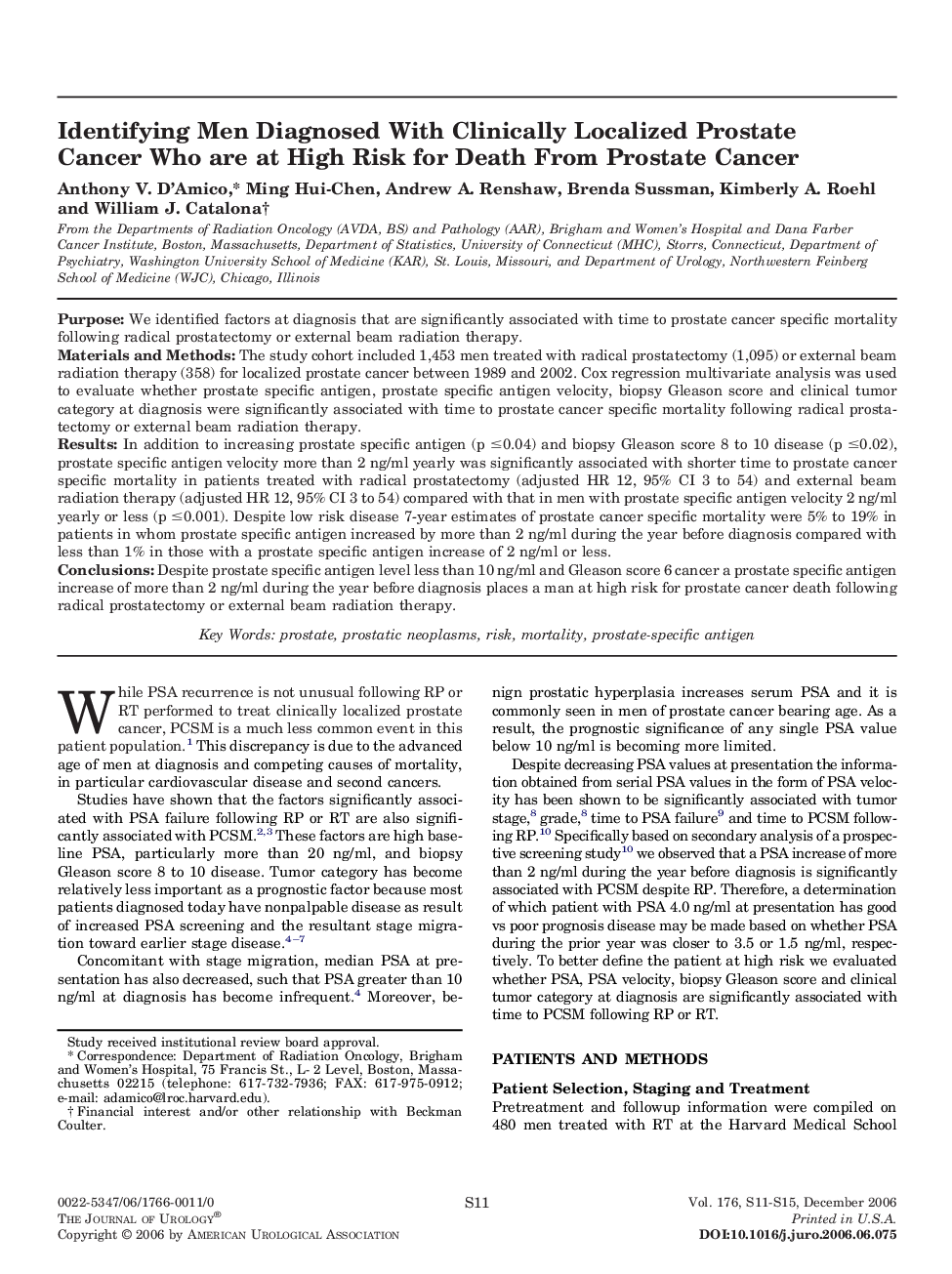| Article ID | Journal | Published Year | Pages | File Type |
|---|---|---|---|---|
| 3875015 | The Journal of Urology | 2006 | 5 Pages |
PurposeWe identified factors at diagnosis that are significantly associated with time to prostate cancer specific mortality following radical prostatectomy or external beam radiation therapy.Materials and MethodsThe study cohort included 1,453 men treated with radical prostatectomy (1,095) or external beam radiation therapy (358) for localized prostate cancer between 1989 and 2002. Cox regression multivariate analysis was used to evaluate whether prostate specific antigen, prostate specific antigen velocity, biopsy Gleason score and clinical tumor category at diagnosis were significantly associated with time to prostate cancer specific mortality following radical prostatectomy or external beam radiation therapy.ResultsIn addition to increasing prostate specific antigen (p ≤0.04) and biopsy Gleason score 8 to 10 disease (p ≤0.02), prostate specific antigen velocity more than 2 ng/ml yearly was significantly associated with shorter time to prostate cancer specific mortality in patients treated with radical prostatectomy (adjusted HR 12, 95% CI 3 to 54) and external beam radiation therapy (adjusted HR 12, 95% CI 3 to 54) compared with that in men with prostate specific antigen velocity 2 ng/ml yearly or less (p ≤0.001). Despite low risk disease 7-year estimates of prostate cancer specific mortality were 5% to 19% in patients in whom prostate specific antigen increased by more than 2 ng/ml during the year before diagnosis compared with less than 1% in those with a prostate specific antigen increase of 2 ng/ml or less.ConclusionsDespite prostate specific antigen level less than 10 ng/ml and Gleason score 6 cancer a prostate specific antigen increase of more than 2 ng/ml during the year before diagnosis places a man at high risk for prostate cancer death following radical prostatectomy or external beam radiation therapy.
